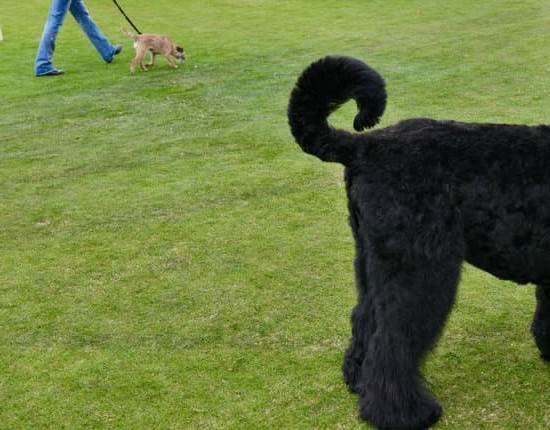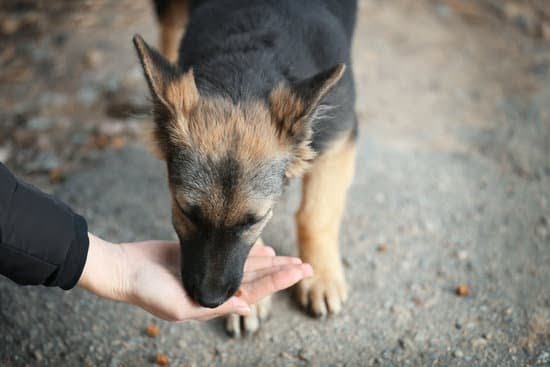Are you looking to make car rides with your furry friend easier and safer? Learning how to train your dog to use a car ramp can be a game-changer. Whether your dog struggles with mobility issues, is anxious about jumping into the car, or simply needs a gentle way to access your vehicle, teaching them to use a ramp can benefit both of you.
Using a car ramp can prevent injuries caused by repetitive jumping in and out of the car, especially for larger or older dogs. By introducing your pet to using a ramp, you are promoting their joint health and overall well-being. Additionally, having your dog use a ramp can reduce the risk of them slipping or falling when entering or exiting the vehicle.
In this guide, we will explore the importance of training your dog to use a car ramp, how to choose the right ramp for your pet’s needs, and provide step-by-step instructions on getting them comfortable with using it. With patience, positive reinforcement, and consistency, you can help your beloved companion feel more confident and secure when traveling in the car.
Choosing the Right Car Ramp for Your Dog
When it comes to choosing the right car ramp for your dog, there are several factors to consider to ensure a safe and effective training process. The first step is to determine the size and weight capacity of the ramp that will best suit your dog’s needs. It’s important to select a ramp that is sturdy enough to support your dog’s weight without bending or wobbling.
Size and Length
Consider the size and length of the car ramp in relation to your vehicle. You want to make sure that the ramp will fit comfortably and securely in place when attached to your car. A ramp that is too short may be too steep for some dogs, while a ramp that is too long may be difficult to maneuver and store.
Surface Material
The surface material of the car ramp is another important factor to consider. Look for a ramp with a non-slip surface to provide traction for your dog as they walk up and down. This will help prevent any accidents or injuries during training sessions or when using the ramp in real-life situations.
Portability and Storage
Lastly, consider how portable and easy-to-store the car ramp is. If you plan on traveling frequently with your dog or need to move the ramp between different vehicles, opt for a lightweight and foldable design that can be easily transported. Ensure that the ramp can be securely stored in your vehicle without taking up too much space.
By carefully considering these factors when choosing a car ramp for your dog, you can set them up for success during training sessions and make car rides together more enjoyable and stress-free.
Getting Your Dog Comfortable With the Car Ramp
Getting your dog comfortable with a car ramp is an essential step in ensuring their safety and ease when entering and exiting vehicles. Here is a step-by-step guide on how to train your dog to use a car ramp effectively.
First, it is important to introduce the car ramp to your dog in a safe and controlled environment. Place the ramp on flat ground and allow your dog to sniff and explore it at their own pace. Encourage them with treats and positive reinforcement to create a positive association with the ramp.
Next, consider using a leash or harness to guide your dog up the ramp initially. Start with a low incline to make it easier for them to walk up and down. Use commands such as “up” and “down” to help them understand what you want them to do. Be patient and allow them time to get used to the process without rushing them.
Once your dog gets comfortable walking on the ramp, gradually increase the incline to mimic the angle of a car’s entrance. Practice going up and down the ramp multiple times until they can do so confidently. Remember to always praise and reward your dog for their efforts, reinforcing the idea that using the ramp leads to positive outcomes.
By following these steps consistently and patiently, you can help your dog overcome any initial reluctance or fear of using a car ramp. With time and practice, they will learn how to navigate the ramp with ease, making car rides more enjoyable for both of you.
Positive Reinforcement Techniques
Positive reinforcement is a key component in training your dog to use a car ramp successfully. By rewarding your furry friend for using the ramp, you are encouraging the desired behavior and making the experience more positive for them. There are several effective ways to utilize positive reinforcement techniques when training your dog to use a car ramp.
One effective method is to use treats as a reward. Every time your dog successfully goes up or down the ramp, immediately give them a treat as a form of positive reinforcement. Make sure to use high-value treats that your dog really enjoys, as this will make them more motivated to continue using the ramp. You can also pair verbal praise with the treats to further reinforce the behavior.
In addition to treats, you can also use toys or play as rewards for using the car ramp. If your dog loves playing fetch or tug-of-war, offer them some playtime with their favorite toy as a reward for using the ramp.
This not only reinforces the behavior but also adds an element of fun and excitement to the training process. Remember that every dog is different, so it’s important to figure out what motivates your specific furry companion and tailor your rewards accordingly when training them on how to train dog to use car ramp.
Overcoming Fear or Anxiety
Understanding Your Dog’s Fear
Before training your dog to use a car ramp, it is important to understand where their fear or anxiety may stem from. Some dogs may be scared of the unfamiliar object, while others may have had a negative experience in the past that has made them hesitant. By pinpointing the specific cause of your dog’s fear, you can tailor your approach to help them overcome it gradually.
Slow and Gentle Introduction
One of the most effective ways to help your dog adjust to using a car ramp is by introducing it slowly and gently. Start by placing the ramp on the ground near your dog and allow them to sniff and explore it at their own pace. Avoid forcing or rushing them onto the ramp, as this can heighten their fear. Encourage positive associations by offering treats, praise, and reassurance throughout the introduction process.
Desensitization Techniques
Desensitization involves gradual exposure to the source of fear in a controlled manner. This technique can be applied when training your dog to use a car ramp. Begin by having your dog walk near the ramp without any pressure to actually climb onto it. Slowly increase their proximity to the ramp over time, rewarding calm and confident behavior with treats and encouragement. With patience and consistency, many dogs can learn to overcome their fear or anxiety surrounding car ramps.
Practice Makes Perfect
Training your dog to use a car ramp can be a challenging but rewarding process. One of the key aspects of successfully teaching your furry friend to utilize a car ramp is establishing a consistent training routine. By incorporating regular practice sessions into your daily routine, you can help your dog become more comfortable and confident with the ramp over time.
To effectively establish a training routine for your dog to use a car ramp, consider the following tips:
- Set aside dedicated time each day for training sessions with your dog. Consistency is key in helping your pet learn and retain new behaviors.
- Start with short training sessions to prevent overwhelming your dog. Gradually increase the length of the sessions as your pet becomes more familiar and comfortable with the ramp.
- Use positive reinforcement techniques such as treats, praise, or toys to reward your dog for using the ramp correctly. This will help reinforce good behavior and motivate your pet to continue practicing.
By implementing a structured training routine, you can help your dog build confidence and develop the skills necessary to use a car ramp safely and effectively. Remember that patience, consistency, and positive reinforcement are essential elements in teaching your furry companion this valuable skill.
Transitioning to Using the Ramp in Real-Life Situations
When it comes to training your dog to use a car ramp in real-life situations, such as getting in and out of the car, gradual exposure is key. Start by placing the car ramp on a flat surface and allow your dog to explore it at their own pace. Encourage them with treats and praise as they get closer to the ramp and eventually step on it. This initial exposure helps build positive associations with the ramp.
Once your dog is comfortable with the ramp on solid ground, it’s time to introduce it near the car. Start by positioning the ramp next to the car without actually using it. Allow your dog to sniff around and investigate while providing reassurance and rewards. Gradually move closer to actually using the ramp by placing treats leading up to it and inside the car.
As your dog becomes more familiar with the car ramp, start guiding them up and down with gentle encouragement. Use treats strategically to motivate them and reinforce positive behavior. Remember to keep training sessions short and positive to prevent any feelings of stress or pressure. With patience and consistency, your furry companion will soon be confidently using the car ramp for stress-free travel experiences.
| Training Tip | Details |
|---|---|
| Start with small steps | Allow your dog time to adjust and progress gradually with their comfort level. |
| Use high-value treats | Reward your dog generously for each successful interaction with the car ramp. |
| Stay patient | Training may take time, but consistency and positivity are key for success. |
Troubleshooting Common Issues
When training your dog to use a car ramp, you may encounter some common issues that can hinder their progress. It’s important to address these problems effectively to ensure a smooth training process. Here are some problem-solving strategies to help overcome any obstacles you may face:
- Fear or Anxiety: If your dog is hesitant or fearful of using the car ramp, start by placing treats on the ramp to entice them to approach it. Gradually move the treats further up the ramp to encourage them to walk on it. Use a calming voice and gentle encouragement to help build your dog’s confidence.
- Slippery Surface: Some dogs may have trouble with ramps that have a slippery surface. To remedy this, consider using a non-slip mat or adding grip tape to the ramp for better traction. You can also try placing a towel or carpet on the ramp for added security.
- Lack of Interest: If your dog seems disinterested in using the ramp, make it more enticing by incorporating their favorite toys or treats into the training session. Take short breaks during training and keep sessions fun and engaging to maintain your dog’s interest.
By implementing these problem-solving strategies, you can help address any issues that may arise during the training process and ensure that your dog becomes comfortable using a car ramp. Remember to be patient and persistent, as each dog learns at their own pace. With time and consistent training, you’ll be able to enjoy stress-free car rides with your furry companion by your side.
Conclusion
Training your dog to use a car ramp may seem like a daunting task at first, but with patience, consistency, and the right techniques, it is definitely achievable. By following the step-by-step guide outlined in this article and using positive reinforcement techniques, you can help your furry friend become comfortable with using a car ramp in no time.
Remember, practice makes perfect, so establishing a training routine and gradually exposing your dog to real-life situations where the ramp is needed are key steps in the process.
It’s important to acknowledge that every dog is different, and some may take longer to adjust to using a car ramp than others. If your pup experiences fear or anxiety when approaching the ramp, be patient and provide reassurance as they work through their emotions. Additionally, troubleshooting common issues like reluctance or hesitation can help you address any roadblocks in the training process effectively.
In the end, celebrating your dog’s success in mastering the use of a car ramp should be a moment of pride for both you and your furry companion. Enjoy stress-free car rides together knowing that you have equipped your dog with an essential skill that not only enhances their safety but also strengthens the bond between you.
With dedication and positive reinforcement, you can make car travel a comfortable and enjoyable experience for both you and your beloved pet.
Frequently Asked Questions
How Do I Get My Dog to Use a Car Ramp?
Getting your dog to use a car ramp requires patience and positive reinforcement. Start by introducing the ramp slowly, allowing your dog to explore it at their own pace. Use treats and praise to encourage them to walk on it and gradually build up their confidence.
How Do I Get My Old Dog to Use a Ramp?
When trying to get an old dog to use a ramp, it’s important to take things slow and be patient. Older dogs may take longer to adjust to new things, so give them time to feel comfortable with the ramp. Use treats and gentle encouragement to motivate them.
Is a Ramp or Steps Easier for a Dog?
Whether a ramp or steps are easier for a dog depends on the individual dog’s preferences and physical abilities. Some dogs may find ramps easier because they offer a gradual incline, while others may prefer steps if they are more used to climbing stairs.
It’s best to observe your dog’s behavior and agility in order to determine which option would be better suited for them.

Welcome to the blog! I am a professional dog trainer and have been working with dogs for many years. In this blog, I will be discussing various topics related to dog training, including tips, tricks, and advice. I hope you find this information helpful and informative. Thanks for reading!





